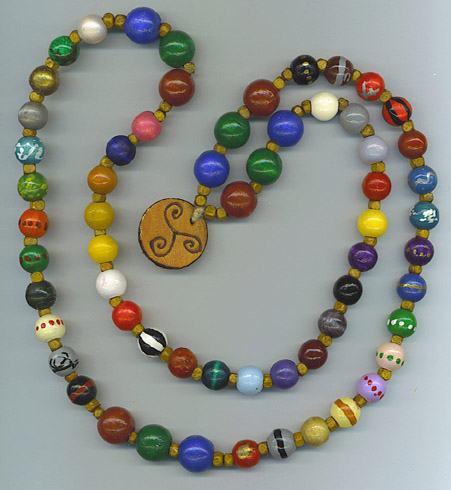 In the late 1980s, I went to the Roman Catholic cathedral in downtown Denver to cover a rally by Catholic feminists who were demanding open talks about the ordination of women and other changes in Church teachings. It was your basic Catholic progressive gathering, or so I thought.
While drifting through the crowd, I found myself talking to a women I had interviewed a few months earlier -- while doing a story on feminist theology and neopaganism. She was a witch and, as I discovered, considered herself a Catholic witch.
In the late 1980s, I went to the Roman Catholic cathedral in downtown Denver to cover a rally by Catholic feminists who were demanding open talks about the ordination of women and other changes in Church teachings. It was your basic Catholic progressive gathering, or so I thought.
While drifting through the crowd, I found myself talking to a women I had interviewed a few months earlier -- while doing a story on feminist theology and neopaganism. She was a witch and, as I discovered, considered herself a Catholic witch.
I thought of that awkward moment long ago while reading this week's Religion News Service online "Article of the Week," a feature by reporter Kimberly Winston titled "‘Hail Persephone' -- Pagans Retool the Rosary." Actually, the focus here is on people like that Catholic Witch I met long ago, people who now tend to identify themselves as "Christo-Pagans." Here's the heart of the story:
No one knows how many neo-pagans use prayer beads. But there are now a sprinkling of pagan-oriented rosary Web sites, including www.sacredgrove.com and www.paganrosary.com, where people can find prayers for an "angelic rosary," a "runic rosary," and a "Celtic goddess rosary," among others.
... Praying with beads is a spiritual practice with a long history in most of the world's religions, one that that neo-pagans are now rediscovering, scholars and practitioners say.
"It has been very common for contemporary pagans to regard Mary in some of her manifestations as a goddess," said Chas Clifton, a professor at Colorado State University and author of "Her Hidden Children: The Rise of Wicca and paganism in America." "Language and ritual have been transferred around from goddess to goddess in the pagan point of view, and the idea of having beads on a string is cross-cultural."
The story does a good job of making it clear that this kind of prayer rite produces a form of spirituality that may seem to create a bridge between different faiths. The experience is similar, as is the yearning for a physical object on which to concentrate while praying.
But the contents of the prayers are different, which means the doctrines are different.
These forms of spirituality look similar, but the divine objects are not the same. So what is going on here?
One explanation is that neo-paganism has simply grown up. Many contemporary pagans come to their faith after rebelling against the religion of their youth. They have now matured to the point where they can reach back and borrow practices that once worked for them.
"For a long time, pagans were exploring," said John Michael Greer, Vaughn's co-author on "Pagan Prayer Beads."
"Sooner or later you say, 'I have been talking about the gods and goddesses, maybe I should find a way to get in touch with them.' One way you do that is through meditation and prayer."
I especially liked the sidebar, which offered -- without commentary -- some pagan rosary prayers. Check it out. This is a timely, effective story about an important trend in modern, some would say "postmodern," spirituality.
Excerpt of "Rosary to the Earth Mother" by Meg
On the Crucifix or Medal: Green Lady of the budding Tree, The Full Blossomed Fruit, the Dying Seed Queen of Life, Death and Birth Mother of Sorrows, Mother of Mirth Ancient Mother Known as: Gaia, Demeter, Tellus, Ceres, and Danu I say this rosary in honor of You.
On the first five beads:
1 -- I ask the Earth Mother to Ground Me 2 -- I ask the Earth Mother to Center Me 3 -- I ask the Earth Mother to help me grow 4 -- I ask the Earth Mother to help me flow 5 -- I ask the Earth Mother to Nourish my Soul
The photo is from www.cauldronfarm.com
